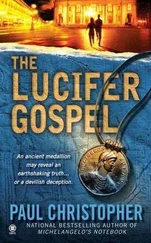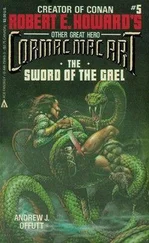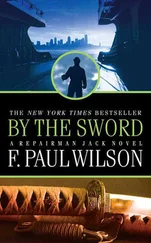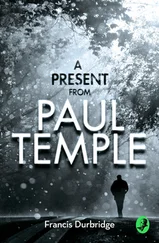Paul Christopher - The Sword of the Templars
Здесь есть возможность читать онлайн «Paul Christopher - The Sword of the Templars» весь текст электронной книги совершенно бесплатно (целиком полную версию без сокращений). В некоторых случаях можно слушать аудио, скачать через торрент в формате fb2 и присутствует краткое содержание. Жанр: Триллер, на английском языке. Описание произведения, (предисловие) а так же отзывы посетителей доступны на портале библиотеки ЛибКат.
- Название:The Sword of the Templars
- Автор:
- Жанр:
- Год:неизвестен
- ISBN:нет данных
- Рейтинг книги:3 / 5. Голосов: 1
-
Избранное:Добавить в избранное
- Отзывы:
-
Ваша оценка:
- 60
- 1
- 2
- 3
- 4
- 5
The Sword of the Templars: краткое содержание, описание и аннотация
Предлагаем к чтению аннотацию, описание, краткое содержание или предисловие (зависит от того, что написал сам автор книги «The Sword of the Templars»). Если вы не нашли необходимую информацию о книге — напишите в комментариях, мы постараемся отыскать её.
The Sword of the Templars — читать онлайн бесплатно полную книгу (весь текст) целиком
Ниже представлен текст книги, разбитый по страницам. Система сохранения места последней прочитанной страницы, позволяет с удобством читать онлайн бесплатно книгу «The Sword of the Templars», без необходимости каждый раз заново искать на чём Вы остановились. Поставьте закладку, и сможете в любой момент перейти на страницу, на которой закончили чтение.
Интервал:
Закладка:
Six days had passed since the firefight at L’Espoir and the murder of Carr-Harris. They’d stayed in Dublin for most of that time, waiting to see what the fallout would be from the death of the old Oxford professor at his country home.
There seemed to have been no consequences at all; it was as though the whole thing had never happened. Nothing in any of the newspapers that Holliday looked through and nothing on the radio or television. No hue and cry, no be-on-the-lookout-for-these-fugitives, no policeman hammering on their hotel room door, no ringing of the telephone. Nothing.
In the end the only conclusion that Holliday and Peggy could make of it all was that their opponents, whoever they were, had carefully cleaned up after themselves either to keep the police off their tails or to ensure that they would find the two Americans before the authorities. One way or another they were only buying themselves a little bit of time; eventually the crime would be discovered.
Peggy and Holliday hadn’t been idle during their brief hiatus in Dublin. Peggy had spent some time re-outfitting themselves from stores at the St. Stephen’s Green Shopping Centre while Holliday followed the few frail leads they had, researching the names Carr-Harris had mentioned at an Internet cafй at the foot of bustling Grafton Street, a crowded pedestrian mall that ran between the corner of St. Stephen’s Green and the entrance to Trinity College on Nassau Street.
Holliday concentrated on tracking down the three names involved with Carr-Harris’s Postmaster escapade off the coast of West Africa during the early days of the war: Edmund Kiss, Hans Reinerth, and the Italian, Amedeo Maiuri.
Several things quickly became apparent, linking the men above and beyond the letter Uncle Henry had discovered on the captured ocean liner: all three men were somehow involved with archaeology, and all three men were deeply involved in mysticism, Kiss and Reinerth with the Nordic roots of the German race and culture, Amedeo Maiuri with the essence of the Ancient Roman military ethic.
Kiss and Reinerth had both become SS officers during World War II, and Maiuri had held equivalent rank in the Fascist Black Brigades. Maiuri had been one of the founding members of the School of Fascist Mysticism in Milan and both Reinerth and Kiss had been high-ranking and important members of the “Study society for primordial intellectual science ‘German Ancestral Heritage,’ ” commonly referred to as the Ahnenerbe, the fundamental source and rationalization for Hitler’s race laws and the annihilation of the Jews.
All three men survived the war and escaped serious prosecution. Kiss faded from view without a ripple, while Reinerth had been intimately involved with the creation of a museum of Stone Age culture still thriving today and located not far from where they were right now on the Bodensee. But eventually he, too, slipped into obscurity. Maiuri, his reputation carefully sanitized soon after Italy’s capitulation in 1943, continued in his previous occupation as director of the archaeological dig at Pompeii until his death in 1960.
Digging even deeper as he ricocheted across the Internet from one linking Web site to another, Holliday eventually found the common thread that bound all three: they had all been members of a secret society formed by a man named Jцrg Lanz von Liebenfels, a former Cistercian monk. The name of the society, organized in 1907 in Burg Werfenstein, Austria, was “The Order of the New Templars.” Originally adopting a right-facing red swastika as its symbol, the Order used the same icon later adopted by the officially recognized Ahnenerbe: a sword, its blade enclosed by a loop of gold and surrounded by a band of runic letters; exactly the same design Holliday had seen on the wrist of the dead man in Carr-Harris’s hallway.
Seeing the image on the screen brought him up short. Was it possible that some arcane bit of old folklore still existed? More likely that the symbol was being used again for some other twisted purpose.
The Order of the New Templars apparently went underground after the war but reemerged in Vienna during the fifties with an ex-SS officer named Rudolf Mund as Prior of the Order. Mund spent almost twenty years trying to resurrect his version of the organization but failed. Nazism was a forgotten enterprise; Communism had replaced it as the world’s enemy.
Digging deeper still, Holliday followed the faint trail left by Mund, eventually connecting him to another SS officer, the man who had in fact been Mund’s superior during the war, SS-Gruppenfьhrer General Lutz Kellerman. Kellerman had also been a member of the Order of the New Templars as well as being a close friend of Heinrich Himmler, chief of the SS and the Gestapo who was in turn the sponsor of both Edmund Kiss and Hans Reinerth. Wheels within wheels.
Kellerman vanished after 1945, presumably escaping through the Vatican “ratlines” and with the help of the near-mythical ODESSA, the Organisation der ehemaligen SS-Angehцrigen, the Organization of Former SS Officers.
Kellerman’s family enshrined his memory and rose to some wealth and notoriety as exporters of farm machinery to Brazil and Argentina. For years there had been rumors that the SS officer had escaped to South America with a fortune in looted gold and jewelry, but no one had ever found any hard evidence.
Kellerman’s son, Axel, had tried unsuccessfully to purchase himself a career in postwar German politics, but even the ultra-right-wing Republikaner party refused to endorse him. Axel Kellerman, now in his fifties and using the name “von Kellerman,” ran the family enterprises from the ancestral castle estate just outside of Friedrichshafen.
Friedrichshafen was a small city of roughly sixty thousand, its main industries being the revitalized Zeppelin works and Friedrichshafen AG, a manufacturer of transmissions for farm machinery and heavy equipment. On the surface the town appeared to be a bright, modern tourist-oriented location far from the bustling industrial centers of Munich, Stuttgart, and the Rhine-Ruhr industrial area, but the city by the lake had a much darker past.
During the war the Zeppelin works manufactured components for the V2 rocket with labor provided by slaves from a satellite of Dachau concentration camp located on the outskirts of the town. Most of the old city center had been completely destroyed during the Operation Bellicose bombing raid of June 20, 1943.
“Do you really think this man Kellerman is going to have any useful information?” Peggy asked as they stood together on the upper deck of the ferry. “And more importantly, if he does have any information is he going to give it to us?”
Holliday shrugged. His brain was getting tired, stumbling over names, dates, events, possibilities. History for him was usually clear, a set of absolutes, set in stone. Now it was something different, vague and without a coherent order. He’d spent a lifetime in the military, where goals were achieved by direct action; there was nothing direct at all about the problem of Uncle Henry’s sword.
“He’s all we’ve got,” said Holliday finally. “Kellerman’s father knew all the parties involved, and he was close to Himmler. He would have known about the sword, I’m almost certain of that. Lutz Kellerman is the link to it all, not to mention the tattoo on that guy’s wrist.”
“But so what?” Peggy said. “How does that help us?”
“What we need to find out is the location, if it still exists, of the right copy of the letter written by Alberic to Hugues de Payens, the founder of the Templars. Without the letter the code on the gold wire is useless, like Braintree told us in Toronto.”
“D.L.N.M. De laudibus novae militiae,” said Peggy.
“Your Latin is improving,” smiled Holliday.
Читать дальшеИнтервал:
Закладка:
Похожие книги на «The Sword of the Templars»
Представляем Вашему вниманию похожие книги на «The Sword of the Templars» списком для выбора. Мы отобрали схожую по названию и смыслу литературу в надежде предоставить читателям больше вариантов отыскать новые, интересные, ещё непрочитанные произведения.
Обсуждение, отзывы о книге «The Sword of the Templars» и просто собственные мнения читателей. Оставьте ваши комментарии, напишите, что Вы думаете о произведении, его смысле или главных героях. Укажите что конкретно понравилось, а что нет, и почему Вы так считаете.











